Relationships between the magnitude of representational momentum and the spatial and temporal anticipatory judgments of opponent's kicks in taekwondo
- PMID: 37809301
- PMCID: PMC10551154
- DOI: 10.3389/fpsyg.2023.1193116
Relationships between the magnitude of representational momentum and the spatial and temporal anticipatory judgments of opponent's kicks in taekwondo
Abstract
For successful actions in a fast, dynamic environment such as sports, a quick successful anticipation of a forthcoming environmental state is essential. However, the perceptual mechanisms involved in successful anticipation are not fully understood. This study examined the relationships between the magnitude of representational momentum (RM) as a forward displacement of the memory representation of the final position of a moving object (which implies that observers perceptually "see" a near future forthcoming dynamic environmental state) and the temporal and spatial anticipatory judgments of the opponent's high or middle kicks in taekwondo. Twenty-seven participants (university taekwondo club members and non-members) observed video clips of taekwondo kicks that vanished at one of 10 frame positions prior to the kick impact and performed three tasks consecutively: anticipatory coincidence timing (CT) with the arrival of kick impact, judgment of the kick type (high and middle kicks) by forced choice, and judgment of the vanishing frame position (measuring RM). Our results showed significant group effects for the number of correct kick-type judgments and the judgment threshold for kick-type choice (kick-typeJT), which was estimated in terms of individual psychometric function curves. A significant correlation was found between the magnitude of RM (estimated at kick-typeJT) and kick-typeJT, but not between the CT errors (estimated at kick-typeJT) and kick-typeJT. This indicates that the magnitude of RM may play an influential role in quick kick-type judgments, but not in coincidence timing while observing an opponent's kick motion. These findings suggest that subjective anticipatory perception or judgment of the future spatial state is vital to anticipatory actions under severe time constraints.
Keywords: anticipation; coincidence timing; kick-type judgment; representational momentum; sport expertise; taekwondo kick.
Copyright © 2023 Imanaka, Sugi and Nakamoto.
Conflict of interest statement
The authors declare that the research was conducted in the absence of any commercial or financial relationships that could be construed as a potential conflict of interest.
Figures


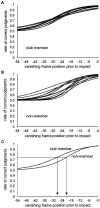
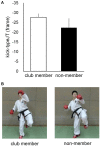
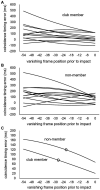

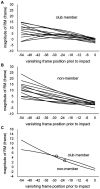
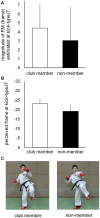
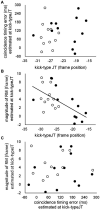
Similar articles
-
The role of the opponent's head in perception of kick target location in martial arts.Front Sports Act Living. 2024 Dec 2;6:1468209. doi: 10.3389/fspor.2024.1468209. eCollection 2024. Front Sports Act Living. 2024. PMID: 39687496 Free PMC article.
-
Can Slow-Motion Footage of Forehand Strokes Be Used to Immediately Improve Anticipatory Judgments in Tennis?Front Psychol. 2018 Oct 4;9:1830. doi: 10.3389/fpsyg.2018.01830. eCollection 2018. Front Psychol. 2018. PMID: 30337895 Free PMC article.
-
A Kinematic Analysis of the Jumping Front-Leg Axe-Kick in Taekwondo.J Sports Sci Med. 2016 Feb 23;15(1):92-101. eCollection 2016 Mar. J Sports Sci Med. 2016. PMID: 26957931 Free PMC article.
-
Anaerobic Sport-Specific Tests for Taekwondo: A Narrative Review with Guidelines for the Assessment.Sports (Basel). 2024 Oct 14;12(10):278. doi: 10.3390/sports12100278. Sports (Basel). 2024. PMID: 39453244 Free PMC article. Review.
-
Forms of momentum across space: representational, operational, and attentional.Psychon Bull Rev. 2014 Dec;21(6):1371-403. doi: 10.3758/s13423-014-0624-3. Psychon Bull Rev. 2014. PMID: 24917187 Review.
References
Associated data
LinkOut - more resources
Full Text Sources

